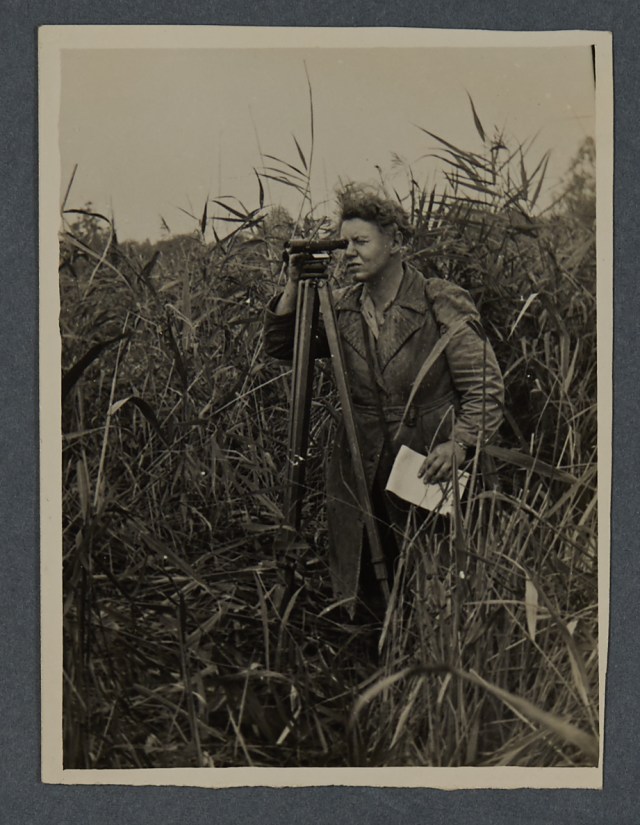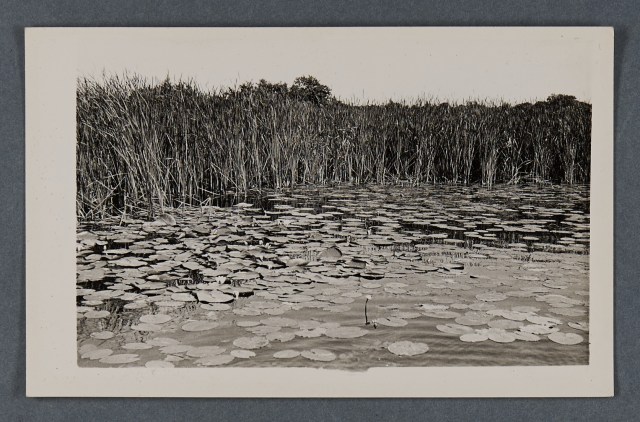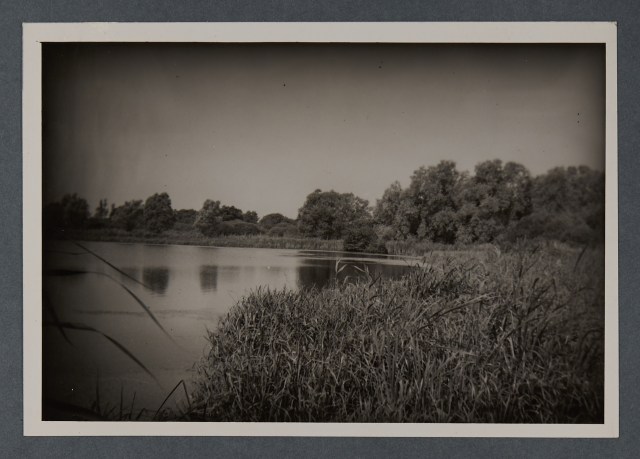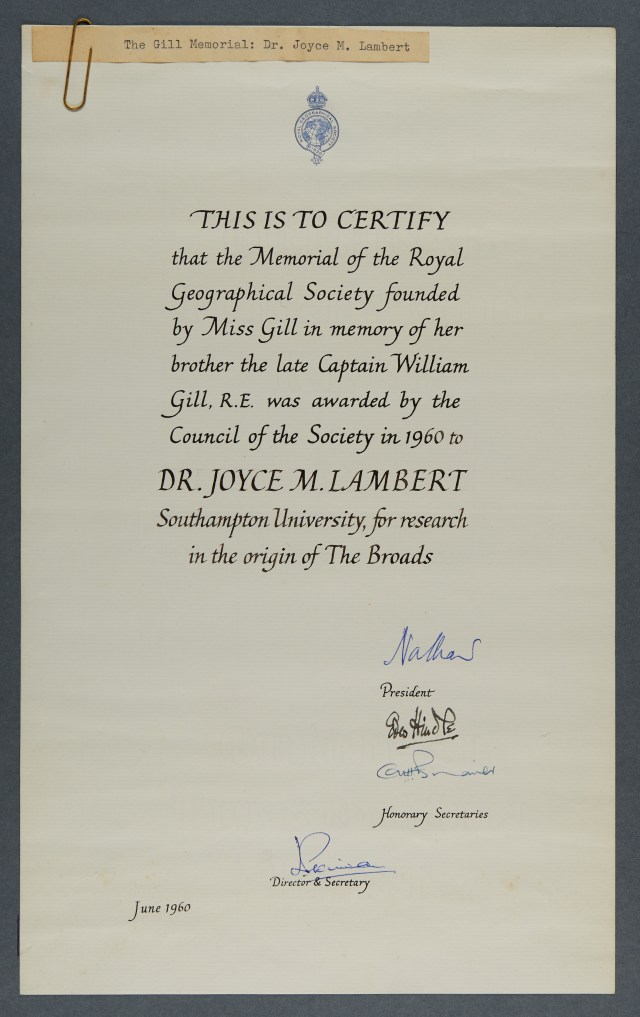As the Broads Outdoor Festival 2016 is now well underway, we thought it was the perfect time to share the research work by botanist, Joyce Lambert, that first demonstrated the reason for the unique character of the Norfolk Broads.
Until the early 1950s, the origin of the Broads had been a geographical mystery. If they were, as was generally assumed, natural lakes, what accounted for their unique character?
It was research work by the botanist, Joyce Lambert, which first demonstrated that the great majority of the broads were man-made. Using a small peat borer to obtain a series of closely spaced cores around the broads, she discovered that the lakes had vertical walls and relatively flat bottoms. Many also had steep-sided islands and peninsulas of peat with similar stratigraphy.

Joyce Lambert conducting research in The Broads. Undated, c.1945-1954. NRO catalogue number MC 2442/2/1/28.
These angular profiles and abrupt transitions between peat and accumulated mud testified to human activity: in a densely populated part of the country, people had been digging peat for fuel on a massive scale. Later, the cavities had filled up with water and their steep sides were disguised by erosion, the accumulation of mud and the growth of vegetation. In 1953, Dr Lambert‘s findings first appeared in print in an article called ‘The Past, Present and Future of the Norfolk Broads’.
In the mid 1950s, Dr Lambert became part of a multidisciplinary team set up to carry out further research with the backing of Cambridge University. The other people involved were physiographer J. N. Jennings, historical geographer C.T. Smith, archaeologist C. Green and engineer J.N. Hutchinson.

Typha swamp, just west of boat dyke, Hoveton fuel broad, 11 July 1949. Photo by J.N. Jennings. NRO catalogue number MC 2442/2/1/28.
Together with the field evidence, the team looked at documentary sources, including the register of St Benet’s Abbey and manorial accounts to show that peat-digging had been an extensive industry in the area by the twelfth century, while the nineteenth-century tithe maps helped to reveal relationships between the broads and holdings of land.
The fruits of their collaborative work appeared in a series of publications, notably a Royal Geographical Society memoir called The Making of the Broads (1960). It is now accepted that the broads resulted from peat pits which were excavated in medieval times and subsequently flooded to form the natural-looking lakes we see today.
Joyce Lambert
Joyce Lambert was born in 1916 in Herne Hill, south London, but was brought up in Brundall, Norfolk. She was educated at Norwich High School for Girls and graduated in botany from the University College of Wales, Aberystwyth, in 1939. After this she returned to Norfolk, and keen to find a research project to sink her teeth into, visited the well-known naturalist Ted Ellis, at Norwich Castle Museum. Ellis prompted her to study the ecology of the Broads, through researching a broad-leafed sweet grass called glyceria maxima that was predominant in the Yare broads. It was through this research that Lambert first began charting the soil profile of the broads, leading to some unexpected results and the conclusion that the broads were not a natural phenomenon.

Typical floating glyceria maxima reed swamp bordering the north side of Surlingham Broad. Photographed August 1945. NRO catalogue number MC 2442/2/1/28.
After a period teaching in Norwich, Dr Lambert became a lecturer in botany at Westfield College, London and later took up a lecturer’s post at the University of Southampton. In 1960, she was awarded the Gill Memorial by the Royal Geographic Society for her research in the origin of The Broads.

The certificate for the Gill Memorial presented to Joyce Lambert, for her research into the origin of The Broads, at the Royal Geographical Society Annual Dinner on 13 June 1960. NRO catalogue number MC 2442/1/25.
Dr Lambert retired in 1979 and returned to live in Norfolk. She died in May 2005.
The Norfolk Record Office holds a large collection of Dr Lambert’s papers from the 1920s-2005, which includes drawings, maps, photographs and written works. The collection contains her personal papers including certificates and references from her early childhood, to her appointment as Leverhulme fellow; her papers regarding her highly significant, groundbreaking research regarding the Norfolk Broads and a collection of offprints of articles written by Lambert and other articles relating to aspects of her research. All of these are available to consult in the search room.














Pingback: Dr Joyce Lambert (1916 – 2005) – Unfinished Business: The Fight for Women’s Rights in Norfolk